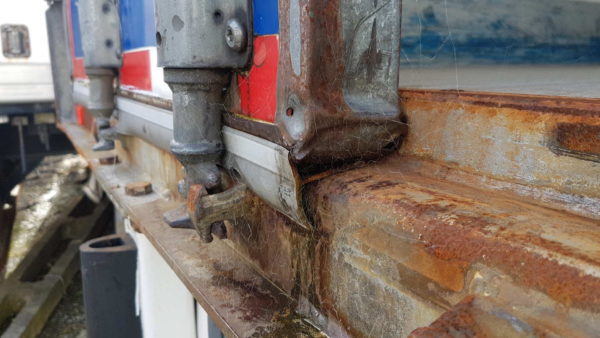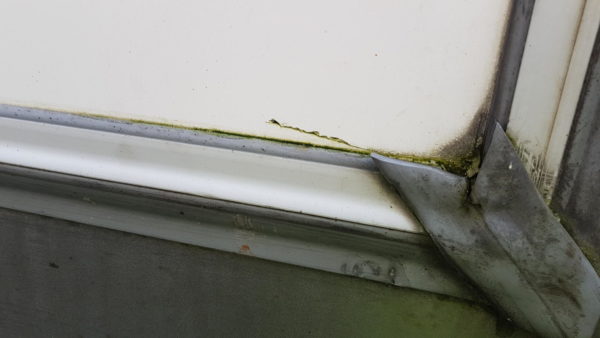If you’re looking to ship chilled or frozen goods by road, you’ll need either a chiller truck or a chiller trailer, sometimes called a reefer. Because fridge trailers are exposed to a lot of condensation and other moisture, checking them out thoroughly is a good idea so you can avoid buying one that’s got serious water damage.

Wheels and tyres
Fridge trailers are mostly two- or three-axle units, although you’ll find quads are common in some countries. Check the tyres for tread depth and cuts and bulges.
Check that the wheel nuts are all present and that there are not streaks from the wheel nuts to the outside of the wheels (this indicates that the wheel nuts have been loose for a while and that the holes in the hub are likely to have suffered some damage).
Check the suspension and brakes.
Rails
There may be a huck rail down the side of the reefer which acts to hold the base to the sides and provide some impact resistance. This will be bolted or rivetted. If there are bolts or rivets missing, or if the huck rail isn’t flush to the side panel, investigate further.
The cant rail runs along the side of the trailer at the top. This is also an area that can get some damage, and if so, it might be letting water in.
Chassis
Some reefers don’t take much weight, so a forklift driving into them can cause bends and cracks to appear. Check the chassis rails.
Wind the legs up and down to check they are straight and don’t have any cracks.
Doors
Before you open the rear or side door, check that there’s no obvious damage to the seals and that the doors latch properly and close tight. Check that the locks work.

If you can move the door once it’s latched, this is not good. Gaps around the door will pull humid air in from the outside and then the chiller has to work extra hard to maintain the temperature.

Floorboards
Looking at the inside of the trailer, if you see the floorboards are warped, this might indicate the chassis is damaged. There should be no holes . The same goes for the kickplates where the wall joins the floor. These are likely to be scratched due to pallets rubbing against them, but they shouldn’t have holes or be rusty.

Walls
If you have insulated curtains, check them for rips and damaged buckles, and check the curtain poles are working and fixed in-place.
Ceiling
Mould build-up on the ceiling is an indication the trailer hasn’t been cared for well, or that it’s not weathertight. To avoid mould, leave the doors open frequently while empty in order to dry it out.
Check for any dents in the ceiling and walls and areas that are going rusty.
Temperature controls
Check that all temperature controls work and that the trailer will reach the prescribed temperature within the timeframe that the manufacturer suggests.
Check that the battery is not dead (if you turn up and it’s running already, be suspicious).
Cooling vents and the cooling unit
Check that cool air is being blown from it and that there’s nothing stuck in the vents such as leaves or paper.
Load restraint
Check the condition of any chilly bungs and shoring bars. Bungs should give a tight fit. Shoring bars should not be bent and should fit into the internal rails.

Connections
Check all lights work and that the towing connection is good.
